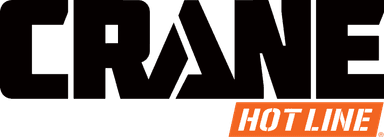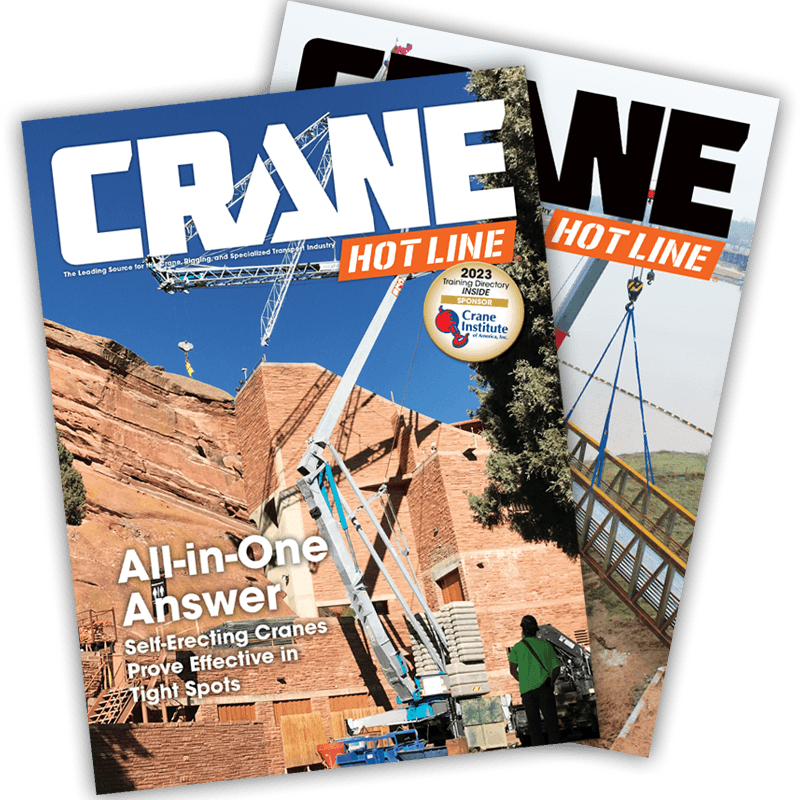Reaching New Heights
April 18, 2007 • While telehandlers essentially perform the same tasks, the individual machines are unique in how they are designed and manufactured. At the inaugural Lift and Access Telehandler Showcase, 12 North American telescopic handlers with 10,000- to 11,000-pound capacities and 50- to 59-foot lift heights took part in the October 2006 event. Participants displayed the features and benefits that set them apart from the competition, while Lift and Access determined their common threads.

Enlarge Image
Lift and Access Telehandler Showcase participants.
The following is a recap of the individual machine reviews from the 2006 Telehandler Showcase, which focuses on the unique designs of this popular machine class. Machine brands and manufacturers present included Gehl, Genie, Gradall, Ingersoll Rand, JLG, Lull, Manitou, Mustang, Pettibone, SkyTrak, Xtreme, and ZoomBoom. The complete article can be found in the February 2007 edition of Lift and Access.

Gehl DL-10H/55
If you are having trouble deciding on a low or high-mounted boom, Gehl Co.,

Enlarge Image
Gehl DL-10H/55 was equipped with the optional PWP system.
The Dynattach tool mounting system automatically locks onto the tool, so operators only have to get out of the cab once to unlock it. The Telehandler Showcase machine was fitted with the optional Personnel Work Platform system, which works in conjunction with a wireless pendant e-stop. An upgrade to the PWP system is the radio remote boom control, which gives workers in the platform control of the ignition and boom functions.
The side-mounted 115-hp John Deere 4045T turbocharged diesel engine and its service points are located under a large, lockable fiberglass cowling. The engine mount is low, and all service points are handy once the hood is raised. A master electric disconnect makes it easy for the unit to be completely disabled for security and servicing.

Genie GTH-1056
Although the GTH-1056 was a very popular telehandler model, Genie Industries,

Enlarge Image
Genie GTH-1056 underwent major updates in 2007.
The most notable difference between the new version and the one shown at the Showcase is the position of the engine, which has been moved back as far as possible in the all-new, 2-feet shorter, 15-inches lower frame. This shift creates more counterweight and trims 2,000 pounds from the overall gross vehicle weight. At the same time, load charts are increased. Another change is accessibility to service the engine. The old unit's engine installation was in-frame and not very convenient to service.
Now, servicing the new GTH-1056 is easy, performed through a pair of swing-out doors on either side of the engine. If a major engine problem occurs, the engine can be slid out the back of the machine with a forklift.
Genie also has moved away from its former roller bearing boom to the more common poly slide pads. Other points of interest are the hose for auxiliary hydraulics has been moved inside the boom, and the hydraulic and fuel tanks have been redesigned to sit side-by-side. A lockable heavy plate steel panel restricts access to the oil tank's fill point and secures the battery.
Now built in-house, the cab features a new dash and interior, and frame-sway has been vastly improved. Additionally, Genie has done away with the need to use calcium-chloride. Pneumatic tires are now standard equipment.

Gradall 544D10-55
The Gradall 544D10-55 is one of only a few telehandlers on the market with a truly unique design. Built by McConnellsburg, Pa.-based JLG Industries, the Gradall telehandler's axle configuration features 90° pivot steering.

Enlarge Image
Gradall 544D10-55's one-of-a-kind with rear-pivot steering.
The rear-pivot design keeps the outside turning radius at only 178 inches, which is less than the overall length of the machine • a major selling point. Only the recent advent of tighter 55° turning axles on competitive machines has allowed larger, longer wheel-based, four-wheel steer machines to compete with this capability.
Independent hydraulic drive motors coupled with
The 544D10-55 lifts 4,000 pounds to the maximum 55-foot lift height without the use of outriggers, but outriggers are required to take 3,000 pounds to its 42-foot horizontal reach.

Ingersoll Rand VR-1056C
The VR-1056C is the largest product in Ingersoll Rand's VR telehandler line-up, and it's built at the company's plant in

Enlarge Image
Design of key operating system make the VR-1056C unique.
Although it looks like a typical outrigger set-up, the VR-1056C uses frame-mounted stabilizers. Unlike frame-mounted outriggers that are intended to carry all or part of the load, IR's stabilizers are simply there to provide stability when needed. In the down position, the stabilizers are not loaded. Since they aren't carrying any weight, th e machine design allows full chart capacities in conjunction with framesway when the stabilizers are in the lowered position. In this configuration, movement is dampened by about 50 percent and limited to 4° of sway. Shifting is accomplished by transferring oil from one stabilizer cylinder to the other simultaneously with the sway of the machine.
The VR-1056C's boom is fitted with dual lift cylinders, which provide stable load handling and are cushioned for softer stops. At the tail of the boom, dual master cylinders keep the carriage properly sequenced. The carriage can rotate a full 113°, which is important when working with a material bucket or any other device used to load a dumpster or dump truck.

JLG G10-55A
Maximizing visibility was a key driver in the development of the G10-55A from JLG Industries,

Enlarge Image
Maximum visibility drove the design of the JLG G10-55A.
Frame design was also integral to the visibility parameters. The center spine or “backbone” design is narrow and has two significant impacts. It allows the side-mounted engine to sit close to the operator to provide a better line of sight to the right side of the machine. The narrow chassis also allows room for a wider cab, which is identified as a component of visibility.
Although the machine is high boom-mounted, it is designed to sit low, producing a balanced, low center of gravity. That is not to say that it has poor ground clearance. At 18 inches, it is one of the best. Weight distribution is minimal, with a difference of less than 500 pounds from one side to the other. With the outriggers down, operators can take 3,000 pounds to the maximum 42-foot horizontal reach.
A 125-hp John Deere 4045TF275 turbo diesel engine is side-mounted and drives a four-speed ZF power shift transmission. All major component and service points are located under the vast, lockable ABS composition hood.

Lull 1044C-54 Series II
First introduced in 1996, the Lull 1044C-54 is part of McConnellsburg, Pa.-based JLG Industries' stable of material handlers. The Series II update took place in 2005, and at that time, the only major change was the conversion from Cummins to John Deere power.

Enlarge Image
Lull's Transaction boom makes it a truly unique machine.
The most unique feature on the Lull 1044C-54 is the Transaction™ boom, which allows the entire boom to slide forward horizontally without moving the machine an inch. The horizontal load placement system is exclusive to both Lull and Pettibone's Traverse™ units, but the Lull can use this capability at this high of capacity.
To accomplish horizontal load placement, the boom is mounted on a sub-frame that carries the entire assembly. Riding on massive rollers and rails, the assembly slides forward 80 inches on the main chassis without losing the 55-foot maximum vertical reach. When the stowed boom is completely rolled forward, the load is 88 inches in front of the outriggers.
Powering the Lull 1044C-54 is a 115-hp John Deere 4045TF275 engine, which is rear-mounted. Although fairly accessible, the placement just doesn't stack up to the side-mounted or more modern mid-mounted engine designs.
Quick-attach auxiliary power is standard on the Lull 1044C-54. One notable option is a tower attachment, which allows the unit to raise 4,000 pounds at 62 feet.

Manitou MT-1745 HSL Turbo
Designed with utility in mind, Waco, Texas-based Manitou North America has incorporated three important features into the MT-1745 HSL telehandler. First is its low-mounted boom placement, which reflects its European design and is the norm in most of the world.

Enlarge Image
Ergonomics, boom and cab placement, and boom design set the Manitou apart.
Next is the operator's seat placement. Sitting high in the panoramic cab, visibility is excellent when the low-mounted boom is stowed.
Last is the boom's design. Unlike many American competitors, the MT-1745 HSL uses a 100 percent hydraulically extended boom, which means there are no chains or sprockets to inspect, tension, or replace. This also makes the unit a true tool handler. When fitted with an optional digging bucket, the Manitou is capable of delivering 15,430 pounds of breakout force.
To help cope with the stress of this force, the chassis is made up of a robust box-frame design. Another feature that helps fulfill the tool carrier philosophy is the 124° head rotation, which better handles buckets and grappling attachments. Additionally, the boom structure is strengthened through a two-piece unitized design with welded C channel sections.
Unique to the Showcase was the unit's side located, transversely mounted Perkins 1104C-44T turbocharged diesel engine. Servicing is made easy as the transverse mount provides equal access to both sides of the engine.

Mustang 1155
Part of Owatonna, Minn.-based Mustang Manufacturing's Deluxe Series, the 1155 is feature- packed and can perform a wide variety of tasks. Although this would make a convenient rental machine, Mustang believes this product lends itself well to owner-operator applications.

Enlarge Image
Mustang 1155 focuses on ergonomics.
Ergonomics are a high priority, the Mustang 1155's cab is a massive 57 cubic feet and features an automotive-style, wrap-around dash. A tilt steering wheel and a tri-function joystick are standard in the Deluxe Series package. The joystick's three functions are metered and include lift, tilt, and extend. A trigger on the leading edge of the joystick allows for instant maximum hydraulic flow for tilt or auxiliary functions. Another switch automatically aligns the rear axle when coming out of four-wheel or crab-steering modes. Mounted on the dash is an air-filter monitor. Although the cab is partitioned by a Plexiglas panel on the boom side of the cab, a wire screen is a no-charge option.
The Mustang 1155 uses a side-mounted, 115-hp John Deere 4045T turbo engine, which works through a fully modulated four-speed Dana T16000 power shift transmission. Located under a large fiberglass hood, virtually every service point and component on the machine can be found. For added security, a key-locked kill switch is also located under the hood.

Pettibone Extendo 10056
The name Pettibone is synonymous with telehandlers, and the 125-year-old Baraga, Mich.-based company has a heritage with this product category that reaches back nearly four decades. The 10056 is part of the Extendo line, and although very mainstream in appearance, it incorporates several unique features.

Enlarge Image
Pettibone Extendo 10056 has telehandler heritage behind it.
On the boom, the telescoping sections ride on steel rollers, and the two wide-stance main lift cylinders are mounted to angle in ever so slightly at the top. This design is intended to keep the boom centered as it elevates to help relieve stress and is accomplished by mounting the cylinders with a spherical bearing. Power is transferred through the Carraro TLB2 four-speed power shift transmission. Carraro also supplies the entire driveline and incorporates the new Precision Steer axle system, which was developed to correct the Ackermann steering geometry in four-wheel drive and steer applications.
Pettibone also has made serious efforts to maximize service access while minimizing preventive maintenance needs. One way is to minimize oil contamination with the utilization of a Parker dirt box. All oil added to the system goes into the primary tank, where it is then filtered through a 10 micron pre-filter when entering the secondary tank.

SkyTrak 10054
Long before it became part of JLG Industries,

Enlarge Image
SkyTrak 10054's simple, reliable design keeps it at the top of the telehandler market.
This unit uses a ZF-supplied, four-speed modulated power shift transmission and continues the ZF theme on through to the axles, which now feature 55° turning angles. The drivetrain is powered by a 110-hp Cummins QSB 4.5-liter turbocharged engine, which lies within the frame as far to the rear as possible and contributes to the machine's counterweight and helps hold the gross vehicle weight to 28,123 pounds. Access to the engine and all service points is available from either side of the frame via a pair of swing-out steel panels.
Outriggers feature a radial design and reach out at 45° angles to the chassis. With the outriggers in position, 4,000 pounds can be taken to its maximum height of 56 feet, and 3,000 pounds to its 39-foot forward reach.

Xtreme XRM1254
Since its introduction in January 2006, Las Vegas, Nev.-based Xtreme Manufacturing's XRM1254 has attempted to give users superior visibility, durability, and accessibility.

Enlarge Image
The XRM1254 was the newest machine at the Showcase.
This innovatively designed telehandler offers 12,000 pounds capacity • 1,000 pounds more capacity than the other machines under review. Because the XRM1254 is Xtreme's closest machine to this class and met the maximum lift requirements, we felt it was appropriate to include this up-and-comer.
To increase visibility, Xtreme did away with visual obstructions at the rear of the machine by optimizing frame design and component placement. The pivot-mounted outriggers are placed for maximum fork visibility. A high-visibility boom angle indicator is also included.
On the durability front, the XRM1254's heavy-duty, three-section boom rides on durable melonited rollers, which incorporate sealed bearings that ride on melonited shafts. All pivot points are sealed and use melonited pins and either spherical ball bearings or high-compression bronze bushings.
Accessing the service points is easy, as the majority of them are mounted on the same side of the engine. An electric fuel pump will self prime the injectors if the unit runs dry.
Direct, dual-control mechanical joysticks are connected right to the HAWE-Hydraulics-supplied control valves to command the main boom and frame-sway functions.

ZoomBoom ZB10056
Breslau, Ontario-based CareLift Equipment Ltd. is owned by one of the largest masonry companies in

Enlarge Image
The ZoomBoom ZB10056 is virtually all steel and quite robust.
The ZoomBoom ZB10056 model was first introduced in 1998 as the ZB10055 and later updated in 2003. Those updates included repositioning the engine closer to the center of the frame and lowering the cab slightly. The reach height was stretched by an extra foot.
One objective of the redesign was to improve rearward visibility, and the view through the boom-supported uprights has been opened up very nicely. Under the “deep-seated” frame, all components are recessed up and out of sight.
The ZoomBoom ZB10056 features a mid-mounted, in-frame drivetrain and 110-hp Cummins turbocharged engine. Although this particular unit was equipped with a Dana T160000 four-speed power shift transmission, look for an upgrade to the T20000 soon.


